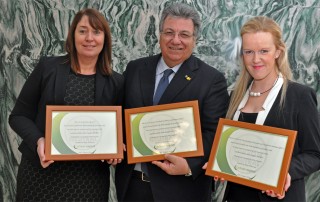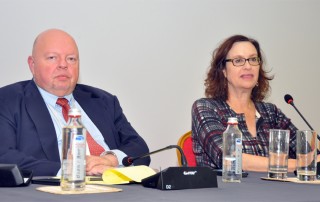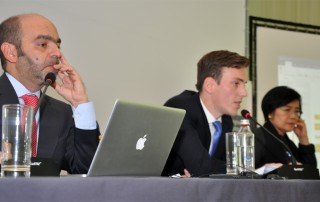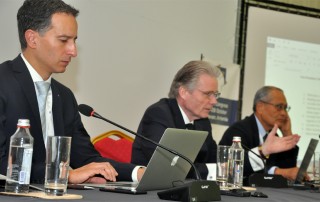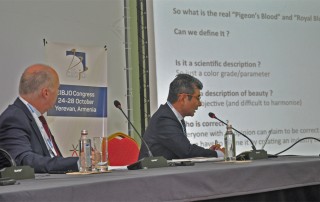Diamond Commission debates terminology for disclosing treatments
ABOVE: Udi Sheintal, President of the Diamond Commission, during the 2016 CIBJO Congress in Yerevan, Armenia.
OCTOBER 27, 2016
The Diamond Commission saw a lengthy debate on Annex B of the Diamond Blue Book regarding diamond treatments, and made numerous changes including adding new definitions.
These included descriptions and the display of imitations or simulants of diamonds, annealing, artificial products, artificial products which are not crystallised, artificially crystallised stones, fancy shapes and graining.
The Commission added the new ISO standard 18323:2015 Jewellery – Consumer Confidence in the Diamond Industry, as a normative reference in the Blue Books.
In addition, some of the Diamond Book language was adapted or changed according to the definitions in the new ISO standard.
Commission Chairman Udi Sheintal said he was happy with the significant volume of work done on the Diamond Blue Book before the Steering Committee meeting took place.
“Members of the Diamond Commission Steering Committee did a tremendous amount of work before they arrived in Yerevan for the congress,” he explained. “As a result, we were able to review the book with many of the changes already widely discussed and agreed. That made it much easier to deal with all the issues.”
“We had an excellent in-depth discussion about the proposed changes and I was pleased to receive so many comments during the Diamond Commission meeting, which showed the strength of interest,” Mr. Sheintal said.
He added that there will be some changes to Clause 3 of the Blue Book – Classification of Materials.
“These new changes will be brought before the members at the 2017 congress,” he added.





